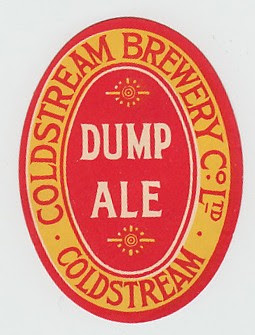Preamblle
“What about South America? That shouldn’t be too hot in July.”
I was discussing with the kids where we could go in the summer. Alexei’s college limits the times we can go.
“Japan and Korea would be the obvious choice.”
“You’re such a Weeb, Dad.” Andrew interrupts.
“But they’ll be way too hot for Andrew.”
The kids weren’t overenthusiastic. Luke warm, at best. Andrew does perk up a little when I tell him how cheap the cocktails are on Ipanema beach.
“We can fly into Rio, then onto Buenos Aires and Santiago. It’ll be the middle of winter.”
I check the temperatures Rio should be mid-20 ºs C. The others more like 10º C. Andrew should be able to cope fine.
I’ve dreamt of visiting Buenos Aires for years. For some reason, it’s never happened.
We were still in the planning stages when Argentina elected a lunatic. Which put Andrew off.
“I wouldn’t feel safe.”
“Fair enough.” I reply. Even though I’m heartbroken.
We substitute Montevideo.
Off we go
Roadworks on the A10 motorway have us worried. Last weekend, it caused traffic chaos around our neighbourhood. We were worried it would make a cab impractical. It turned out to be no problem at all.
We get to Schiphol a little after nine. Where the longest wait if for the taxi to drop us off. There's basically no queue at either security or passport control. After a quick visit to the duty free, we're in the lounge barely forty minutes after leaving home.
Me and Andrew visit the bar first. A Pils each for the kiddies, two whiskies for me. No Teachers today. I have to make do with two Jim Beams. One with ice, one without.
“Why do you get ice in one and not the other?” Alexei asks, rather logically.
“It’s so they don’t think that both are for me.”
With the skimpy measures they serve – just a single – you need to get more than one. Otherwise, you’d just be walking to the bar the whole time.
Next, me and Alexei go for the food. Scrambled egg, potatoes, mushrooms and meatballs for me. A pile of stuff for him.
“That’s the spirit, Lexie.” Stuff down as much as you can.”
“Are you taking the piss?”
“No. Just making sure we get our money's worth. “
“You made that joke last time. It hasn’t got any funnier.”
I need to justify the 52 euros I had to pay for one of the kids. I haven’t decided which one yet. It’ll be going on their bill. That they’ll pay me when they get a job. If that ever happens.
As I go for my third round, Alexei says: “Don’t go crazy with the whisky.”
“When did I ever do that?”
“Er, every time free whisky is on offer.”
“That’s not true. Not 100% every time.”
“Close enough.”
“I’m just preparing for the stress of flying. Self-medicating, you might say.”
“Or say that you’re just a piss head.”
“That’s a bit unfair.”
“Is it? Really?”
We lounge around for a while, eating and drinking. It's been pretty much stress-free, so far.
I try not to cut it too fine with heading for our gate. It’s reasonably close at least, on pier E. Andrew gets nervous if I leave it too late. Especially after that time in Korea, when the ground crew were already looking for us.
As it is, we time getting to the gate perfectly. They're just at the end of boarding zones 1 and 2. We waltz directly on.
The flight is slightly held up by a no-show with a checked in bag. But we still leave about on time.
I do my typical thing of watching shit films. Vacation, Terrible Bosses 1 and 2, The Millers. All easy-to-watch crap. Alexei has 300 episodes of House loaded onto his phone to keep him entertained.
The food is, well, airline food. It isn't as bad as on some flights. I manage to eat most of it. Through gritted teeth.
I’m glad when we finally plonk down onto the runway in Rio. My arse is aching after 12 hours glued to my seat.
“Now for the fun part, kids. The death march to immigration.”
“Are you sure you aren’t exaggerating, old man.” Alexei says.
“You’ll see, And less of the old man. It’s fat old man to you.”
As ever, the walk from the gate is ridiculously long. Down a bare corridor, with occasional moving walkways. No fun at all.
“It’s like an underpass.” Alexei remarks. “But much longer.”
We're directed to the priority lane at immigration. And are through in a jiffy.
Luggage retrieval is a problem. Despite only having one checked bag paid for, we checked in three. Which was great for lightening our load in the airport. Mine and Andrew's bag pop out straight away. It's a longer wait for Alexei's. Long enough to get worried. Especially as it has a priority tag and should have been one of the first bags out.
When it does finally pop out, we get a taxi voucher from the machine. And soon we're on our way, rocking and rolling on the road to Rio.
Not that we can see much, as it’s dark. Just the shiny lights of the DIY superstores that flank the motorway.
It takes a while, but eventually we pull up outside our Ipanema hotel. The one I’ve stayed in the last couple of times I’ve been in Rio. It’s handy for the beach and shops. And not to too stupidly expensive.
After checking in, we head to a nearby shop for essential supplies. Mostly beer. But also some bits and bobs to eat.
We spend a couple of hours chilling in my room, watching the TV. They drink beer. I sip my duty-free Tomantin.
The kids turn in around midnight. While I watch the test highlights.
It's been, happily, quite a stress-free day.
Whisky whisks me smoothly down the road to sleep.



















